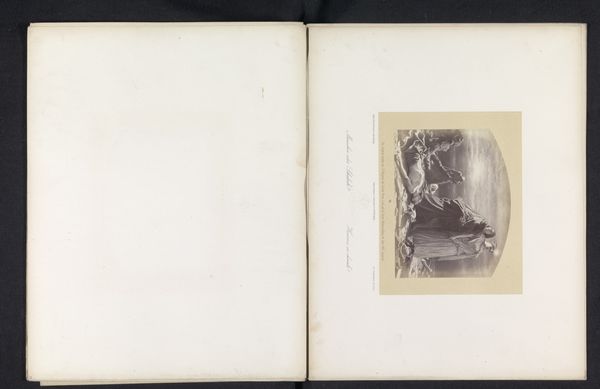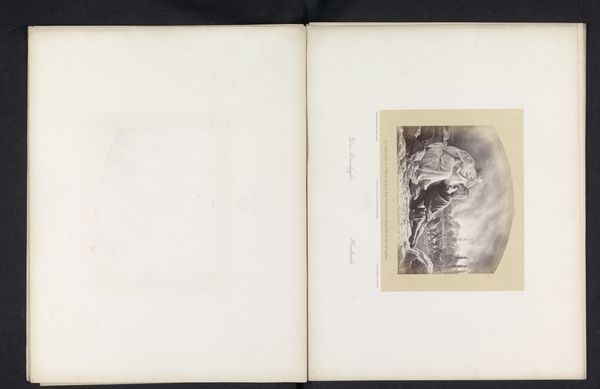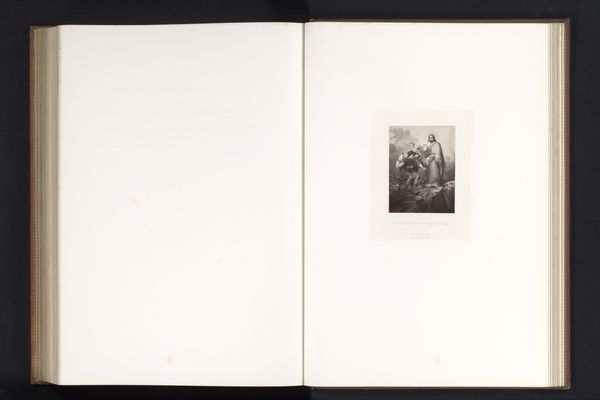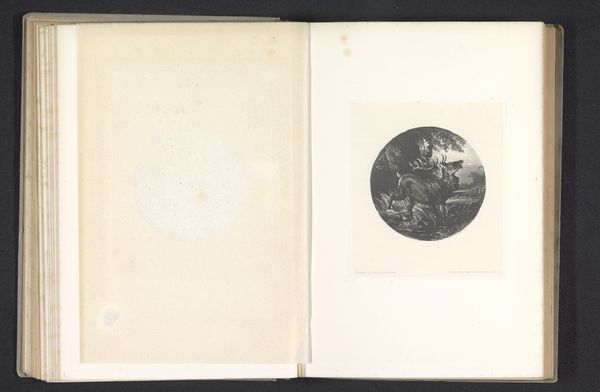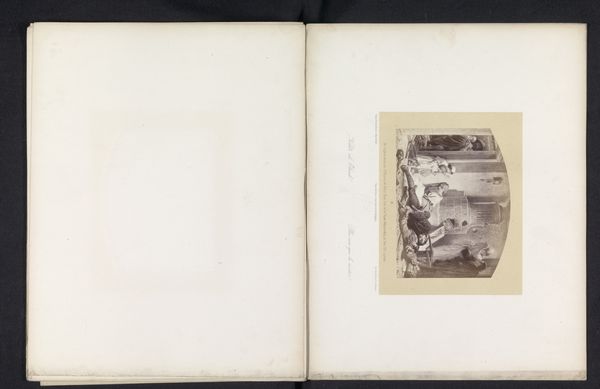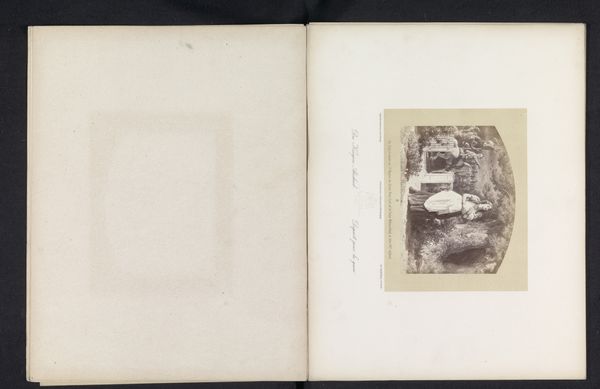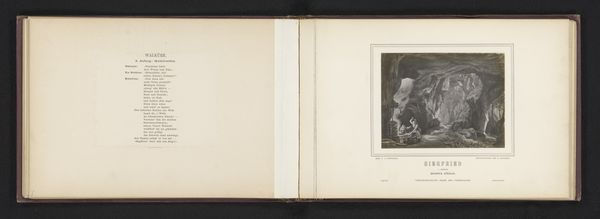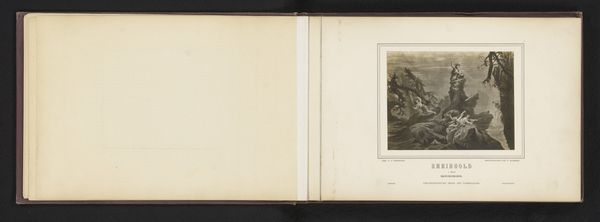
Fotoreproductie van een tekening van een gezelschap in een tuin die kijken naar een streep licht aan de hemel before 1868
0:00
0:00
print, photography, gelatin-silver-print
# print
#
landscape
#
photography
#
gelatin-silver-print
Dimensions: height 115 mm, width 149 mm
Copyright: Rijks Museum: Open Domain
Curator: I find this gelatin-silver print, taken before 1868 and attributed to Ludwig Angerer, strangely unsettling. The photographic reproduction of a drawing shows a gathering in a garden gazing at a streak of light. It feels posed, unnatural. Editor: But it's also captivating! The contrast of the soft, blurred landscape with that crisp, bright light is almost surreal. There’s an eerie formalism to it, with the figures arranged just so to direct our gaze. Curator: Eerie indeed. I'm immediately drawn to how the photographic process transforms the original drawing. Look at the texture. The paper grain, the chemical interactions—it’s less about the depicted scene and more about how the materials shape our perception. Editor: Yes, the materiality is crucial here. Think about the labor involved: the draughtsman creating the original image, then the photographer, Angerer, reinterpreting it through his own medium, each hand impacting the final result. What strikes me is the interplay of production and representation of light here. It asks us: where did the original artwork originate and from whose perspective do we see it? Curator: And the choices within that process! The printing itself becomes an act of creation, imbued with intention. The photographer isn't merely copying but re-framing, editing reality through this chemical lens. Editor: Absolutely. These were crafted objects, even reproductions. Each print was individually produced; a chemical bath and manual manipulation would lend it uniqueness that mass-produced copies lack today. It challenges the boundaries between craft and technology, wouldn't you say? Curator: I do agree that it forces one to reassess rigid distinctions within the art world. Aesthetically speaking, the composition creates this push and pull between the idyllic garden scene and that otherworldly streak of light, that one single, focused moment disrupting all pastoral normalcy. Editor: Thinking about it from a material standpoint really enriches the reading. It highlights labor, choices and processes behind what seems to be a pastoral, tranquil snapshot. It certainly invites more questions than it answers. Curator: I will ponder over it some more.
Comments
No comments
Be the first to comment and join the conversation on the ultimate creative platform.
